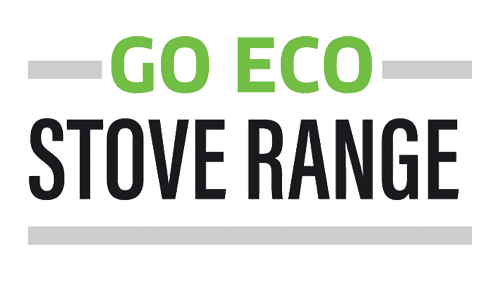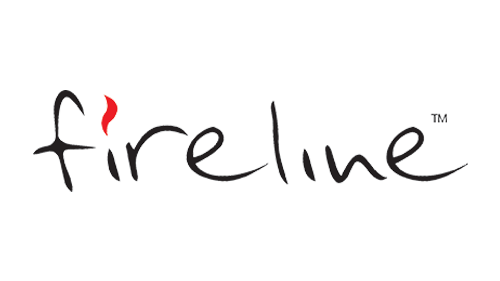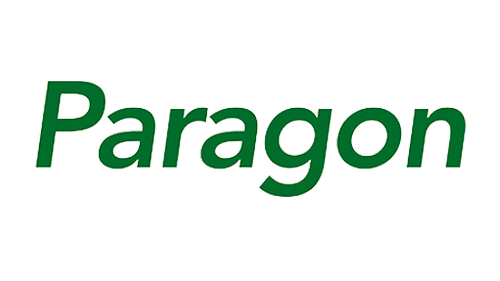The SIA – The Stove Industry Alliance has recently launched the #PositiveWoodBurning campaign. The objective of this campaign is the raise awareness around the benefits of modern wood-burning stoves when using dry wood.
Who are the SIA?
The SIA – Stove Industry Association is the trade association for the UK stove sector. Their members include appliance, flue and chimney system, component, glass and fuel manufacturers, suppliers, retailers and installers. They also have members representing competent person schemes, the chimney sweep sector and test laboratories. Their work is focused on promoting the benefits of modern, sustainable solid fuel stoves and representing the industry to policymakers.
More about this #PositiveWoodBurning campaign can be found here.
Here are some of the marketing communications which the SIA has used to help promote the benefits of burning wood and their #PositiveWoodBurning campaign, along with a more detailed insight and contect into what they mean:
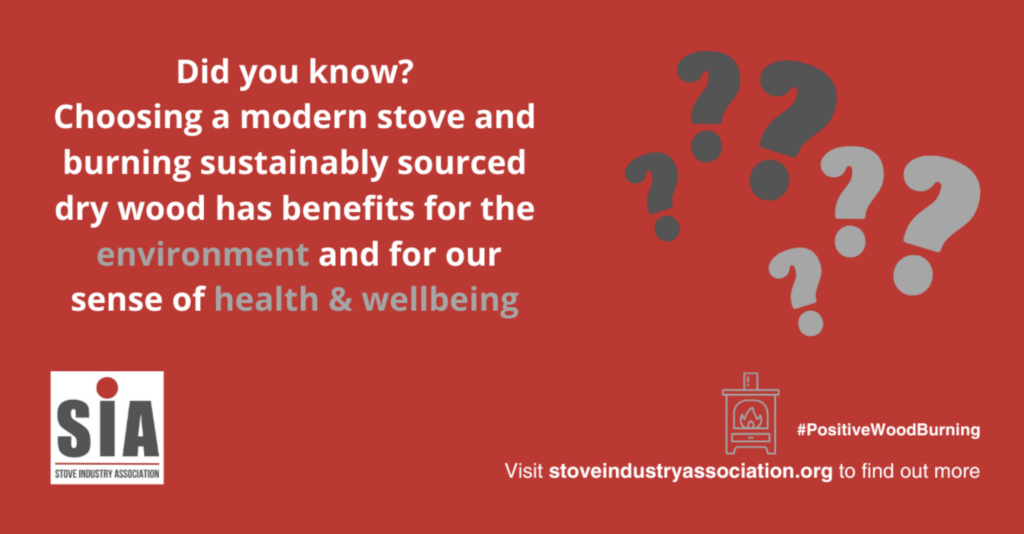
Heath & Wellbeing – Many invest in a wood-burning stove for more than just the wonderful heat they produce. There is something very special, hypnotic – even magical about dancing flames, which have proven to have psychological benefits. A fire can help reduce blood pressure, and it’s been proven. With relaxation comes a host of health benefits, one of which happens to be reduced blood pressure. The benefits of lower blood pressure are significant; these include a lower risk of stroke, reduced kidney and heart disease and also a lower risk of eye damage associated with higher blood pressure.
The environmental benefits of burning wood are significant – many of which are detailed below.
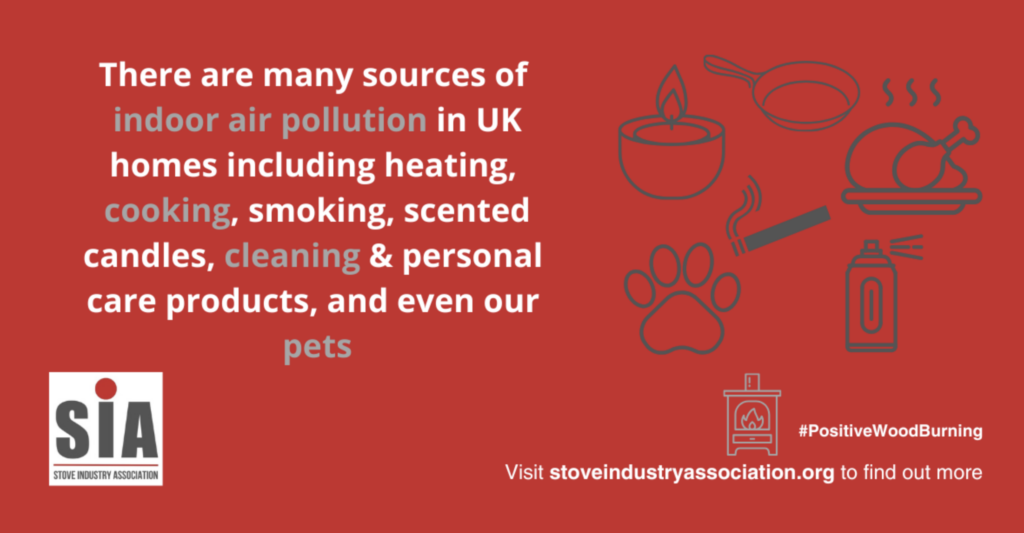
Indoor Pollution – There are many sources of particular matter (PM) in the home, such as personal care products, candles, cleaning, cooking and burning wood. It’s been reported in the past that wood-burning stoves are the main offenders of indoor pollution.
However, a recent literature review by Dr Amanda Lea-Langton, senior lecturer in Bioenergy Engineering at the University of Manchester, which looked at studies into how wood-burning stoves contributed to particular matter (PM) in the developed world, shows no scientific evidence for adverse health effects. This study found no scientific evidence for adverse health impacts from exposure to the indoor air typically associated with modern, enclosed wood-burning stoves.
The study also found the use of modern wood-burning stoves may actually help to improve air quality inside the home due to the natural draught created during wood stove operation that pulls air from the room into the appliance and from outside.
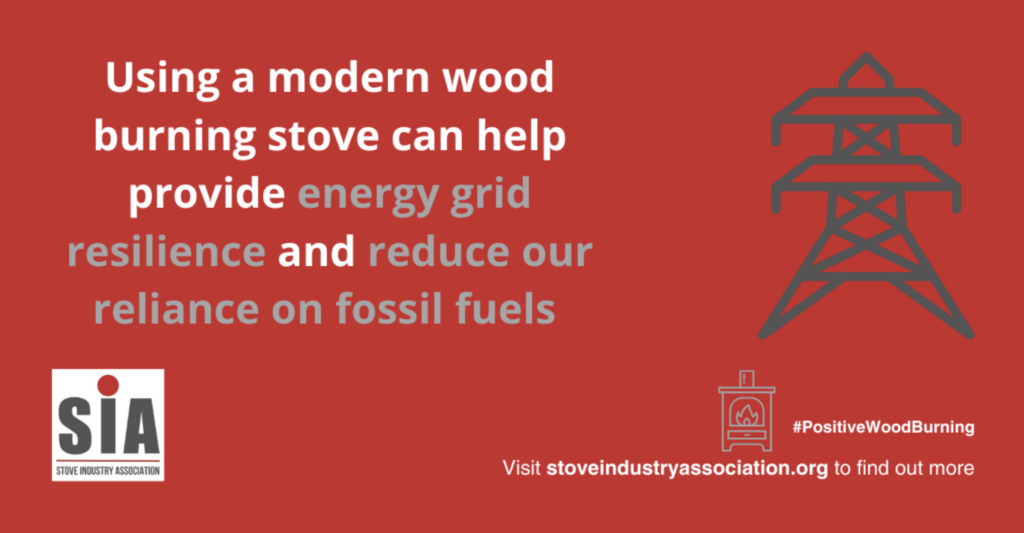
Fossil Fuels – Fossil fuels originate from organic matter that has been buried deep underground for millions of years and made into coal, oil or natural gas. When these fuels are burned, they release carbon back into the atmosphere. It is these types of fuels which contribute significantly to global warming. This is the reason why the world at large is very keen to reduce fossil fuel reliance. A wood-burning stove is totally off-grid, enabling someone to reduce their reliance on the energy grid.
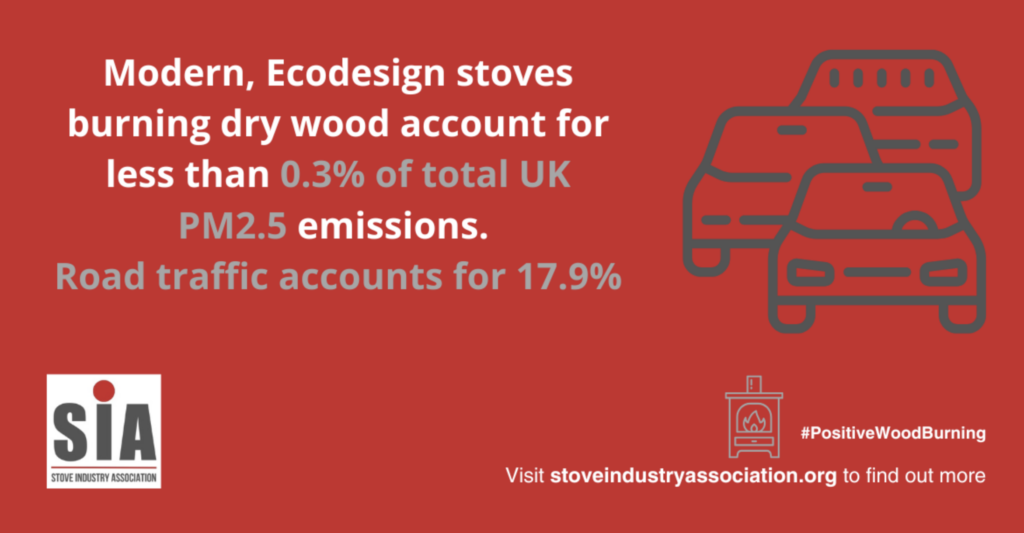
PM2.5 Emissions – PM2.5, also known as fine particulate matter, refers to particles or liquid droplets in the air that have a diameter less than 2.5 micrometres across (about 3 per cent of the diameter of a human hair). Some PM2.5 is naturally occurring, such as dust and sea salt, and some are manmade, such as particulates from vehicle exhausts.
PM10 and PM2.5 emissions have significantly fallen since the 1970s. The graph below shows this, which is a result of increased environmental awareness and the reduction of coal as a heating source.
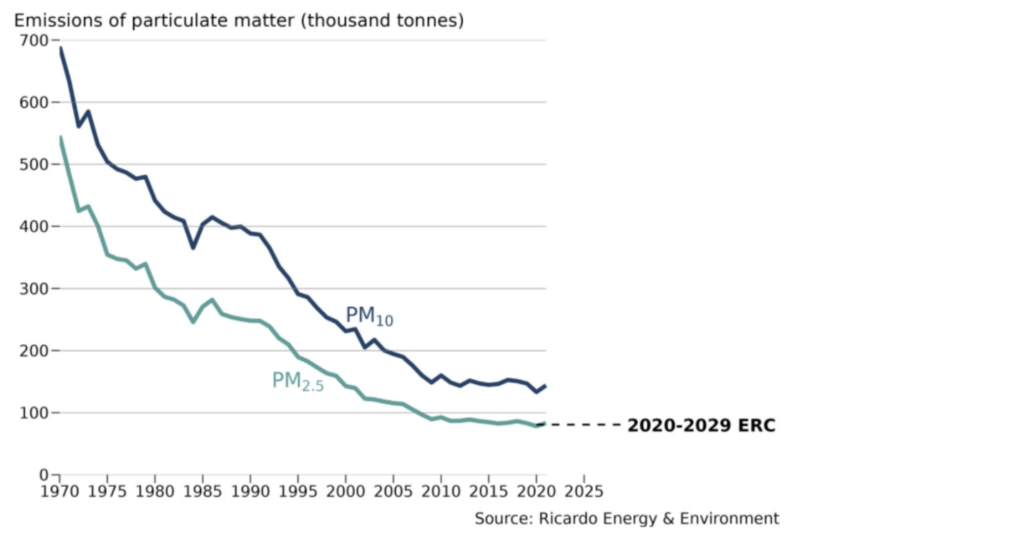
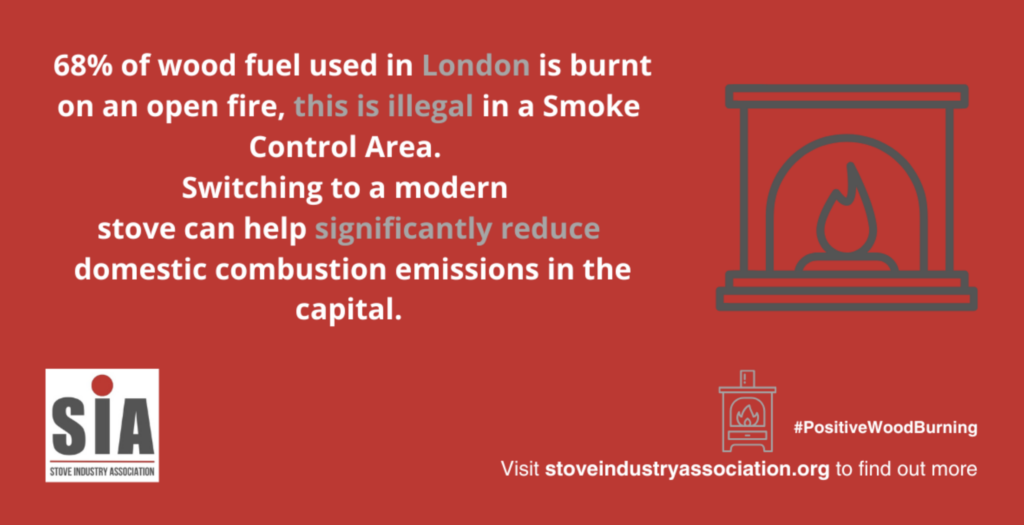
Open Fires & Smoke Control Areas – Smoke Control Areas in the UK do not allow you to emit smoke from a chimney unless you are burning an authorised fuel or using an exempt appliance. An open fire does not qualify as an exempt appliance.
One key reason open fires are so bad, whether you’re in London or not, is that they require more wood fuel for the same heat output compared to a high-efficiency wood-burning stove. Furthermore, the fire does not sit behind a sealed glass window, unlike with a wood-burning stove, which has two inherent problems: 1. Much of the heat in a room disappears up the chimney, similar to leaving a window open and 2. Pollutant byproducts from the inefficient open fire ventilate, to some degree, into the room. The stove’s glass plays a critical role in keeping you both safe and warm.
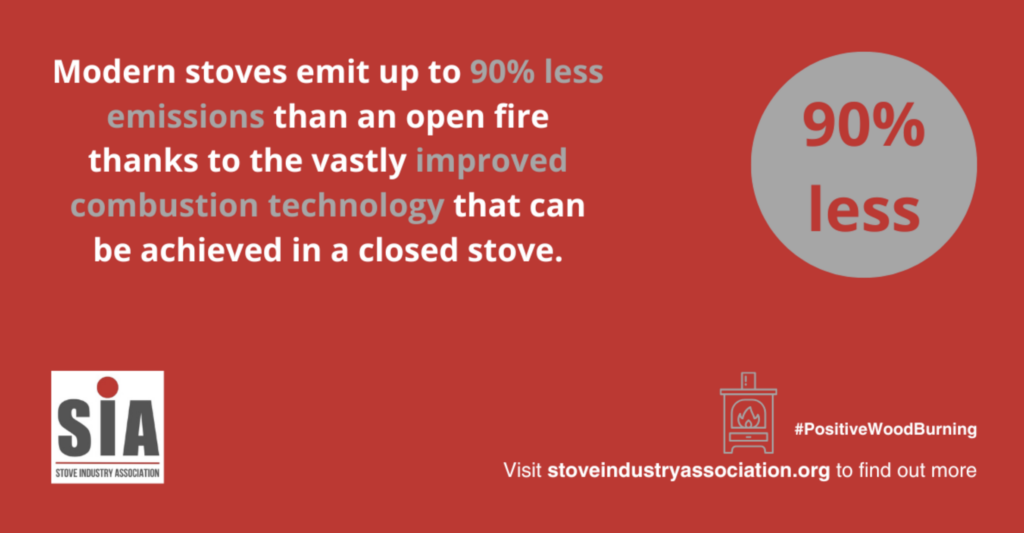
Ecodesign Combustion Technology – When a stove is tested to see if it is Ecodesign compliant, it must keep within these very stringent combustion parameters:
OGCs – Organic gaseous compounds (OGC’s) from stoves will not exceed 120 mgC/m3 at 13% oxygen for stoves using solid fuel other than compressed wood pellets, and 60 mgC m3 at 13% oxygen for stoves using compressed wood pellets. The measurement of mgC/m3 means milligrams per cubic meter.
CO – Carbon Monoxide is a deadly, colourless, odourless gas that is produced during combustion. When a stove is being checked for compliance with Ecodesign it is not allowed to exceed 1,500 mg/m3 at 13% oxygen using solid fuel other than compressed wood pellets, and 300 mg/m3 at 13% oxygen for stoves using compressed wood pellets.
NOx – Nitrogen Oxides are a combination of gases, which are composed of nitrogen and oxygen. NOx gases react to form smog and acid rain as well as being central to the formation of fine particles (PM) and ground-level ozone, both of which are associated with adverse health effects. NOx from solid fuel stoves using fossil fuels shall not exceed 300 mg/m3 expressed as NO2 at 13% oxygen.
PM – PM stands for Particulate Matter and Particulate matter (PM), also known as particle pollution, is a complex mixture of extremely small particles and liquid droplets that get into the air. Once inhaled, these particles can affect the heart and lungs and cause serious health effects.
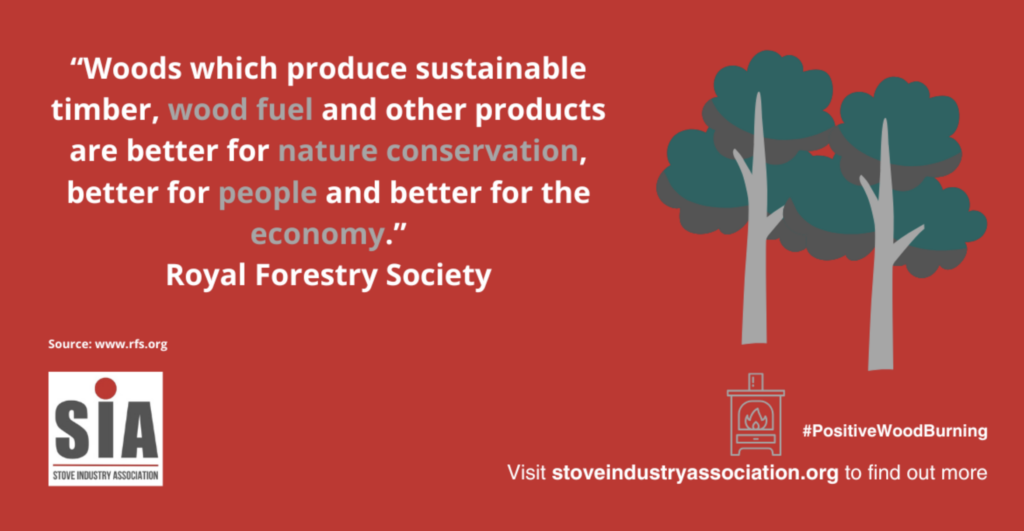
Wood Sustainability – When it comes to forest management and the supply of firewood, there is misplaced worry among some that broadleaf forestry management activities reduce diversity, but this is not true. According to the Small Woods Association and other sources, the opposite is in fact true, and the reason is that a closed canopy woodland does not allow sufficient light through to sustain much flora and fauna at ground level. Thinning has been shown to improve biodiversity by encouraging life throughout both canopy and ground levels.
Good forest management is beneficial for firewood supply, replenishment and biodiversity. Specimen trees in their prime are not felled to burn as firewood. Firewood actually comes from mainly thinning for growth and removal of diseased or broken trees to support healthy woodland. A managed woodland is far better at absorbing carbon than an unmanaged forest.
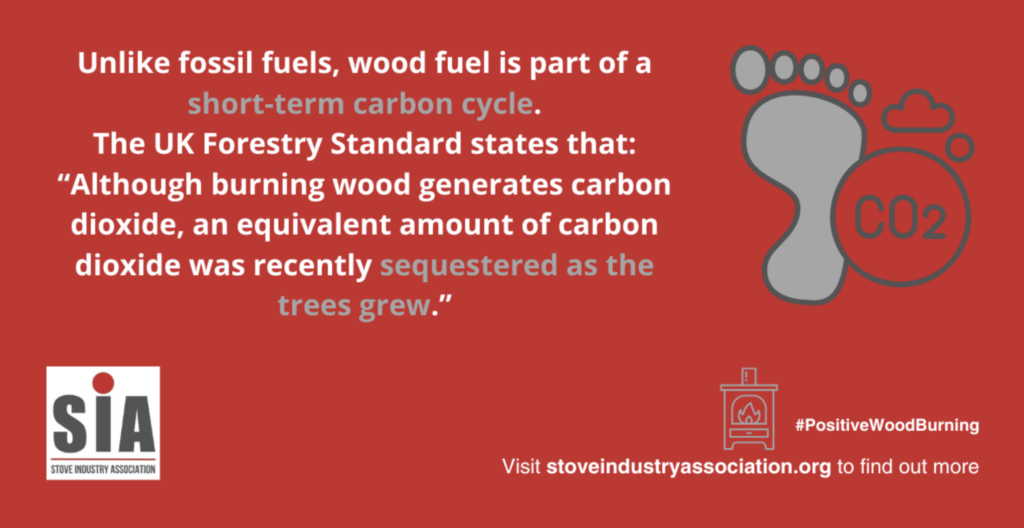
Carbon Cycle of Wood – As part of the short-term carbon cycle, carbon is stored in organic matter as things like plants and trees absorb carbon during photosynthesis. This stored carbon is released back into the atmosphere when the trees die and decay or are burnt as fuel. As this carbon is part of a relatively short-term cycle, it’s considered carbon neutral.
Carbon neutrality relates to the amount of carbon dioxide (CO2) emitted into the atmosphere is equal to the amount absorbed, also known as net zero. If something is carbon neutral, it can generally be considered a sustainable, environmentally friendly method of doing something.
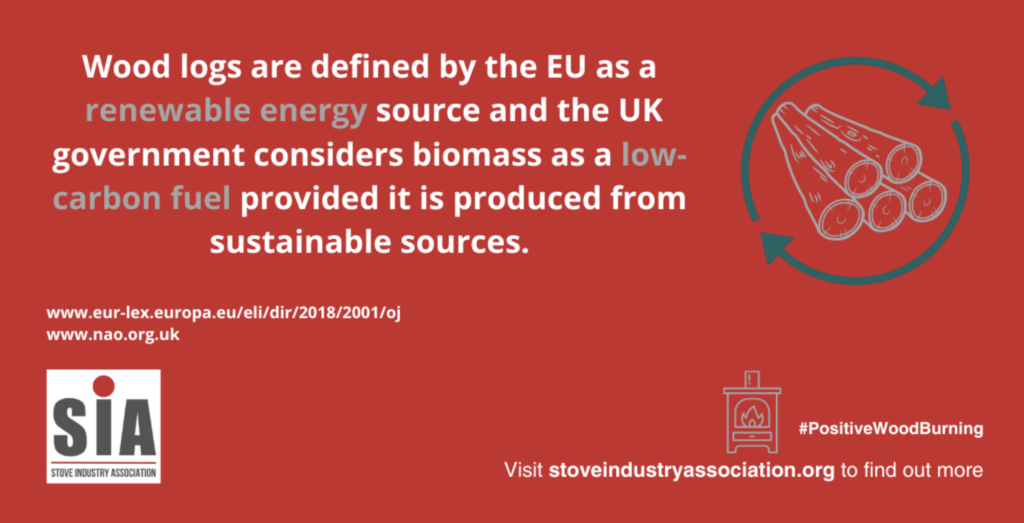
Sustainable Logs – Burning wood on a high-efficiency wood-burning stove is a green and sustainable way to keep warm. Wood is sustainable as, unlike fossil fuels, it’s limitless in its supply – as long as woodlands and forests are managed correctly. More often than not, wood can grow at a quicker rate than its consumed. .



